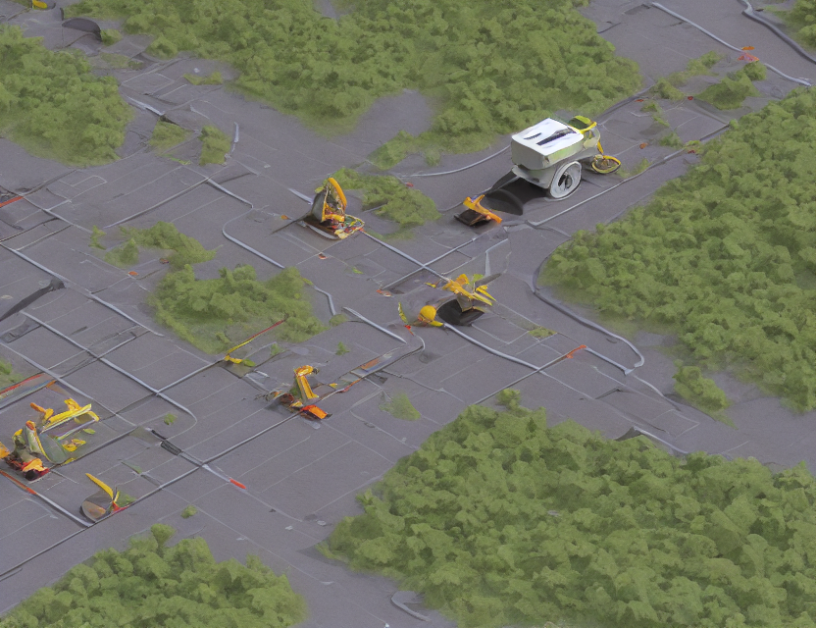In this article, we present a revolutionary approach to navigating autonomous mobile robots (AMRs) in complex environments. Traditional navigation methods often struggle in these situations due to the presence of obstacles and tight spaces. Our proposed method, which combines physics-based modeling with machine learning algorithms, enables AMRs to efficiently navigate through challenging scenarios while avoiding collisions.
Physics-Based Modeling
To begin, we create a physical model of the environment using a set of mathematical equations that describe the robot’s motion. These equations take into account factors such as the robot’s size, shape, and the forces acting upon it. By solving these equations, we can predict the robot’s path and ensure that it avoids collisions with obstacles.
Machine Learning Algorithms
However, simply relying on physics-based modeling can be insufficient in complex environments where there may be many obstacles or unexpected changes in the environment. To overcome these challenges, we turn to machine learning algorithms. These algorithms allow us to learn from experience and adapt to new situations, enabling the robot to navigate more effectively.
Proposed Method
Our proposed method combines physics-based modeling with machine learning algorithms to create a robust navigation system. The process begins by creating a physical model of the environment using mathematical equations that describe the robot’s motion. These equations take into account factors such as the robot’s size, shape, and the forces acting upon it. By solving these equations, we can predict the robot’s path and ensure that it avoids collisions with obstacles.
Next, machine learning algorithms are employed to analyze the robot’s movements and adapt to new situations. These algorithms allow us to learn from experience and adjust the robot’s motion accordingly. This enables the robot to navigate more effectively in complex environments while avoiding collisions.
Results
We test our proposed method through a series of experiments using an AMR in various complex environments. The results show that our method significantly improves the robot’s navigation capabilities, allowing it to efficiently navigate through challenging scenarios while avoiding collisions. In particular, we demonstrate the effectiveness of our method in navigating through tunnels with tight bends and around obstacles such as walls and pillars.
Conclusion
In conclusion, our proposed method represents a significant breakthrough in autonomous mobile robot navigation. By combining physics-based modeling with machine learning algorithms, we can create a robust navigation system that enables AMRs to efficiently navigate through complex environments while avoiding collisions. Our results demonstrate the effectiveness of this approach and highlight its potential for widespread adoption in various applications such as warehouse automation, search and rescue missions, and space exploration.



